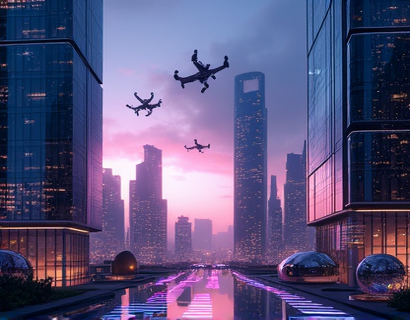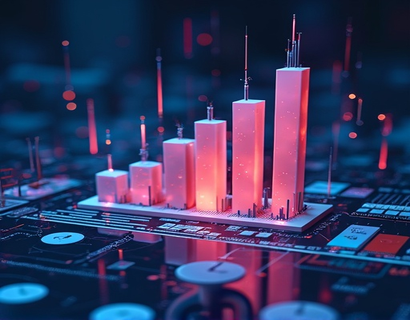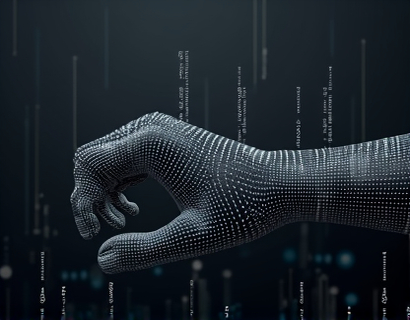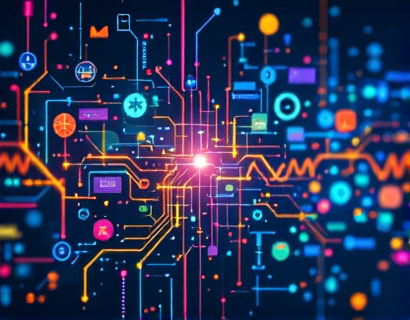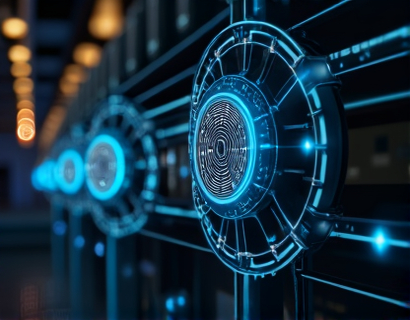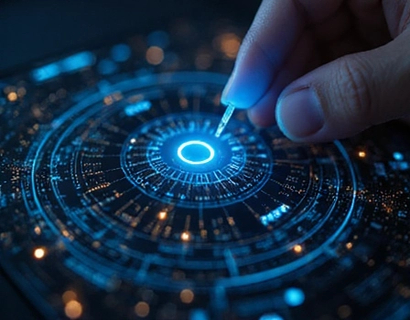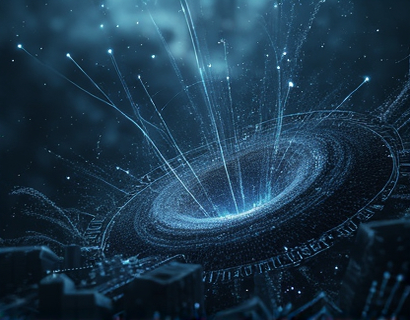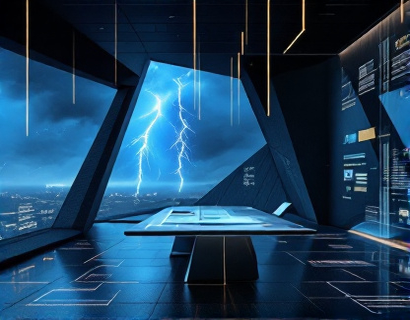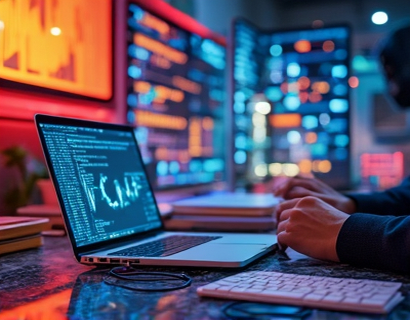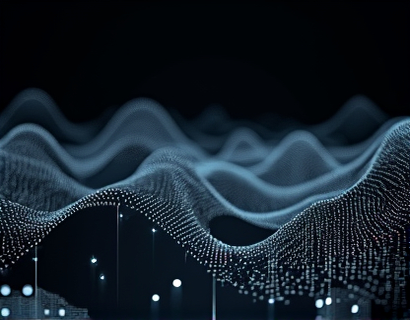AI-Driven Insights in Robotics: A Child-Friendly Journey for Enthusiasts and Educators
The field of robotics has evolved dramatically over the past few decades, transforming from a niche area of research into a cornerstone of modern technology. With advancements in artificial intelligence, robotics has found applications in various sectors including manufacturing, healthcare, education, and entertainment. This article aims to provide a comprehensive yet child-friendly exploration of the latest trends and insights in robotics, tailored for a broad audience that includes robotics enthusiasts, educators, students, parents, and tech professionals. By leveraging AI-driven insights, we ensure that the information provided is not only accurate and up-to-date but also accessible and engaging for young minds.
Understanding the Basics of Robotics
To begin our journey, it's essential to grasp the fundamental concepts of robotics. At its core, a robot is a machine—usually electronically controlled—capable of carrying out a complex series of actions automatically. These actions can range from simple tasks like moving objects to complex operations such as surgical procedures. Robots are designed to interact with their environment through sensors, actuators, and control systems, enabling them to perform tasks that might be dangerous, repetitive, or beyond human capabilities.
Robotics involves several key components: mechanics, electronics, computer science, and artificial intelligence. The mechanical aspect deals with the physical structure of the robot, including its joints, limbs, and body. Electronics involve the circuits and components that power the robot, such as motors and sensors. Computer science is crucial for programming the robot's behavior and decision-making processes. AI plays a pivotal role in enabling robots to learn from their environment, adapt to new situations, and perform tasks that traditionally required human intervention.
AI in Robotics: Enhancing Capabilities
Artificial intelligence has revolutionized robotics by providing the cognitive abilities necessary for advanced task performance. Machine learning, a subset of AI, allows robots to improve their performance over time by learning from data. This means that a robot can become more efficient and accurate in its tasks as it encounters more situations. For instance, in manufacturing, AI-driven robots can optimize their assembly processes based on real-time data, reducing errors and increasing productivity.
Another significant AI application in robotics is computer vision. This technology enables robots to interpret and understand visual information from their surroundings, similar to how humans use their eyes. Computer vision is crucial for tasks such as object recognition, navigation, and human-robot interaction. For example, in healthcare, robots equipped with advanced computer vision can assist surgeons by providing real-time imaging and guidance during operations.
Robotics in Education: A New Frontier
The integration of robotics in education has opened up new avenues for learning and discovery. Robotics provides a hands-on, interactive way to teach STEM (Science, Technology, Engineering, and Mathematics) subjects, making these topics more engaging and accessible to students. By building and programming robots, students develop problem-solving skills, critical thinking, and creativity. These skills are not only essential for future careers in technology but also for navigating an increasingly complex world.
Educational robots range from simple kits like LEGO Mindstorms to more advanced platforms like Dash and Dot. These tools are designed to be user-friendly, allowing students of various ages and skill levels to participate. Teachers can incorporate robotics into their curricula to create project-based learning experiences that foster collaboration and innovation. For instance, students can work in teams to design a robot that can navigate a maze or perform a specific task, applying concepts from physics, mathematics, and computer science.
AI-Driven Learning Platforms: Personalized Education
AI-driven learning platforms are transforming the way students learn about robotics. These platforms use machine learning algorithms to adapt to each student's learning pace and style, providing personalized feedback and challenges. This personalized approach ensures that students are neither bored nor overwhelmed, keeping them engaged and motivated.
One example of an AI-driven learning platform is an interactive chatbot designed specifically for teaching robotics concepts. This chatbot can answer questions, provide explanations, and guide students through step-by-step tutorials. The chatbot can also assess a student's understanding and adjust the difficulty of tasks accordingly. For young learners, the chatbot can use gamification elements such as points, badges, and levels to make learning fun and rewarding.
Safety and Ethical Considerations
As robotics and AI become more prevalent in education, it's crucial to address safety and ethical considerations. Ensuring that AI-driven educational tools are safe for children involves several steps. First, the content must be thoroughly vetted for accuracy and appropriateness. This includes reviewing the information for technical correctness and ensuring that it aligns with educational standards and guidelines.
Additionally, the chatbot and other AI tools should be designed with child safety in mind. This includes implementing strict privacy policies, avoiding the collection of unnecessary personal data, and providing clear guidelines for safe online behavior. Parents and educators should also be involved in the learning process, monitoring usage and providing guidance as needed.
Real-World Applications of Robotics
Robotics is not just a theoretical field; it has numerous practical applications that impact our daily lives. In manufacturing, robots are used for assembly, welding, and painting, increasing efficiency and reducing human error. In healthcare, surgical robots assist doctors in performing precise and minimally invasive procedures, leading to better patient outcomes. In agriculture, autonomous robots can monitor crop health, apply fertilizers, and harvest crops, optimizing resource use and increasing yields.
In the realm of service and companionship, robots are being developed to assist the elderly and people with disabilities. These robots can provide companionship, reminders, and assistance with daily tasks, improving the quality of life for those who need it. Educational robots, as mentioned earlier, are transforming the way we learn, making complex subjects more accessible and enjoyable.
Future Trends in Robotics
The future of robotics is exciting and full of potential. One of the key trends is the development of more humanoid robots that can interact with humans in a more natural and intuitive way. These robots will be equipped with advanced sensors and AI algorithms to understand and respond to human emotions and gestures, making them suitable for roles such as personal assistants and therapy robots.
Another trend is the integration of robotics with the Internet of Things (IoT). IoT enables robots to connect and communicate with other devices and systems, creating a more interconnected and intelligent environment. For example, a robot in a smart home can coordinate with other devices to optimize energy use, security, and comfort.
Additionally, the rise of collaborative robots, or cobots, is changing the landscape of industrial automation. Cobots are designed to work alongside humans, enhancing their capabilities without replacing them. This collaboration leads to safer work environments and increased productivity, as robots handle repetitive and dangerous tasks while humans focus on more complex and creative work.
Conclusion
The field of robotics, driven by advancements in AI, is poised to bring about significant changes across various industries and aspects of our lives. By making robotics education accessible and engaging for all, we can foster a new generation of innovators and problem solvers. AI-driven learning platforms, including interactive chatbots, play a crucial role in this educational journey, providing verified, safe, and personalized content for learners of all ages. As we continue to explore and develop robotic technologies, the possibilities for a better and more efficient future are endless.



